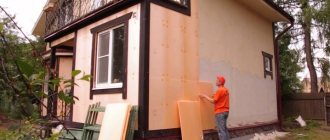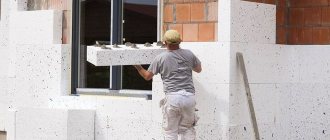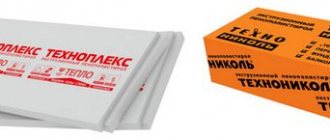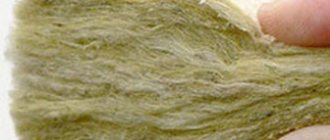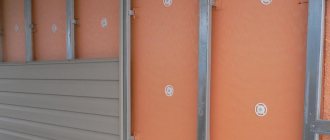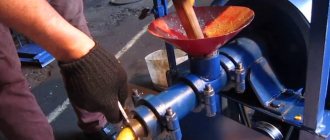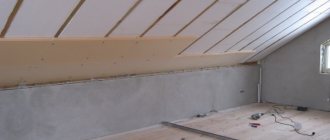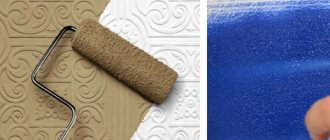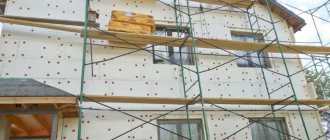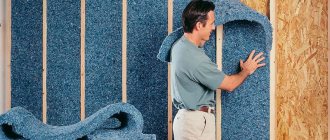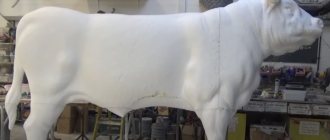Is polystyrene foam harmful or not to human health?
What insulation should you use to avoid turning your home into a time bomb? After all, any thermal insulation material, with the exception of moss or flax, which is used to insulate wooden log houses, is a synthetic material, which means it contains toxic substances that are potentially dangerous and can harm human health. Particular discussions among users are caused by such questions as “is polystyrene foam harmful as insulation indoors” and “does the harm of extruded polystyrene foam exceed the harm caused by compressed polystyrene foam (ordinary polystyrene)”?
Is the buyer doing the right thing by giving preference to such an easy-to-use, relatively cheap and popular polystyrene foam?
It is dangerous for health to insulate a balcony from the inside with polystyrene foam
Is extruded polystyrene foam harmful to people?
We suggest you find out whether extruded polystyrene foam is harmful to human health? To do this, let’s break down the composition of the material into its components and consider the main dangerous component – styrene.
- Styrene – 0.05%. This figure is tens of times less than what is allowed by sanitary standards for residential premises in the Russian Federation. At the same time, the maximum permissible concentration of styrene in the EU countries is at the level of 0.002 mg/m3. But, do not forget that styrene tends to accumulate in the body. It demonstrates a cumulative effect (concentration increases 600 times over 20 years). And styrene is released already at a temperature of 25°C.
- The damage to polystyrene foam when exposed to high temperatures is another important aspect. In this case, toxic substances are released: vapors of styrene, benzene, carbon monoxide, carbon dioxide and soot. In this case, the combustion temperature of styrene is 1100°C. At this temperature, even metal melts, which leads to the destruction of the building.
- Time is another indicator. The decomposition period of expanded polystyrene is more than a century. During intensive use (20-25 years), its harm to health increases. After all, during this time, about 60% of the decomposed styrene is released.
- Oxygen, upon interaction with which formaldehyde and benzaldehyde are formed.
Why is styrene harmful?
- phenylethylene (styrene) accumulates in the liver and is not excreted from the body;
- adversely affects the functioning of the heart;
- exposure to styrene is critical for pregnant women, in particular for the fetus;
- entails irritation of the mucous membranes and respiratory tract.
Myth 3 Expanded polystyrene breaks down quickly
Expanded polystyrene is not resistant to high temperatures, and its structure is destroyed already at 30 ° C.
There is a method for determining durability, based on a cyclic change in temperature from +40 °C to −40 °C with aging in water. Each such cycle is taken to be equal to 1 conventional year of operation. Using this method, high-quality building grades have a durability of at least 50 years.
For mechanochemical destruction to begin, it is necessary to heat the foam to 160 C. When the temperature rises to +200 C, thermal oxidative destruction begins. Above +260 C, depolymerization begins, decomposition to the original monomer - styrene.
This also includes the myth about the fragility of this material: expanded polystyrene cracks, crumbles, and loses its heat-insulating properties after 7-8 years. Manufacturers provide a 25-year warranty.
Yes, indeed, if the surface is not properly insulated with plaster solutions, the foam can quickly become saturated with water, which leads to a sharp drop in thermal insulation properties, and with cyclic exposure to negative temperatures, lead to rapid destruction
That’s why it’s so important to follow technological regulations
Where is it safe to use polystyrene foam?
- in places where there are no potential sources of fire;
- in non-residential premises;
- use for external insulation of the base, foundation, insulation of a frame house with polystyrene foam from the outside.
As you can see, insulation inside the house is unacceptable, and polystyrene foam installed under the slate will not cause harm only if it is installed in a non-residential attic with good ventilation.
Let us note once again, answering the question of whether polystyrene foam is harmful indoors, it is not the styrene itself that is harmful, but its concentration. Expanded polystyrene is a completely safe decor, but is not recommended as insulation for residential premises.
Building codes
Certification documents are issued for facade insulation systems in Russia - Technical Certificate of Rosstroy of the Russian Federation. But so far, not a single technical certificate for a facade insulation system with a thin plaster layer specifies penoplex, technoplex or its analogues as the main wall insulation.
That is why you will not find the facade of an administrative building insulated with extrusion, because not a single state inspection organization will approve the insulation project for such a facade (and the insulation of the facades of administrative buildings must be approved), unless it is a “squatter construction”.
Flammability of penoplex
The popularity of penoplex for insulation is increasing every year.
The main question remains: does penoplex burn? In production, polystyrene foam is used as the main raw material, which is resistant to fire. This was reflected in the characteristics of penoplex.
What flammability class does penoplex belong to?
The manufacturer produces several lines of insulation, each of which has different fire resistance. The flammability class is indicated on the packaging of the material. Penoplex can be found with characteristics G1-G4. Most types of penoplex belong to the G3-G4 class. By adding antiprenes, the manufacturer managed to reduce flammability.
Is penoplex dangerous in a fire?
Previously, extruded polystyrene foam emitted harmful smoke when burned, which had a negative impact on health.
Modern production technologies have made it possible to improve the structure of thermal insulation material, due to which, when exposed to fire, it emits only carbon dioxide and carbon dioxide, such as wood.
Is penoplex flammable or not?
Like other insulation materials, penoplex has pros and cons, one of which is the material’s exposure to fire. There are disputes between experts and manufacturers on this matter. The insulation burns when exposed to direct flame. It does not contribute to the spread of fire, since with indirect influence it does not burn, but smolders. Penoplex ignition occurs extremely rarely, and in minor fires self-extinguishing is possible.
Expanded polystyrene - its composition and production technology
What is polystyrene foam and what is it made from?
Expanded polystyrene is a gas-filled material. Its production is carried out by steam heating of specially prepared polystyrene granules.
Polystyrene is preliminarily subjected to special treatment - its granules are filled with gas.
Depending on the purpose of the final product, natural gas or carbon dioxide can be used.
Carbon dioxide is used in the production of fire-resistant material.
During the heating process, the gas filling the granules begins to expand, which leads to an increase in the volume of the latter. The volume of granules can be increased by 15-30 times.
If the process is not restrained, then at the end of heating, a crumbly material is obtained, which is used to fill frameless furniture and as bulk insulation during construction work.
If it is necessary to obtain solid polystyrene foam, foaming is carried out in an appropriate closed form.
In this way, polystyrene foam boards are produced, used for wall cladding when insulating buildings.
When foaming polystyrene foam in a closed form, a variety of decorative elements are also made. Boxes for packaging various household products, etc.
This thermal insulation material has a number of advantages, the main ones being the following:
- the presence of a high degree of thermal insulation;
- the presence of a long service life of the material;
- low water absorption coefficient;
- the presence of a low vapor absorption coefficient;
- high degree of biological stability;
- lack of attractiveness for the settlement of rodents and various parasites;
- small mass of finished insulation.
Another significant advantage of this thermal insulation material is its low cost.
Sequence of work
To insulate the joints you will need polyurethane foam.
Thermal insulation of a house, garage or bathhouse is an objective necessity. After installing the insulation, heating costs are reduced, and the room temperature remains stable. Placing the heat insulator outside avoids condensation, problems with dampness and reduced space.
It is not always possible to insulate a panel or frame house from the outside. Residents have to insulate the walls of the house from the inside with penoplex. The material's properties are suitable for interior work. To complete the work, you can hire builders or install the slabs and finish the apartment yourself.
Preparatory activities
At the preparation stage, the necessary materials are purchased. To complete the work you will need:
- Penoplex slabs in the calculated quantity, plus a small margin for trimming.
- A special adhesive composition for extruded polystyrene foam, sold in the form of a dry mixture.
- Construction film for insulating joints between slabs.
- Reinforcing fiberglass mesh for plaster.
- Plastic disc-shaped dowels for fixing the insulation - 5 pieces per slab.
- Dry plaster mixture.
- Finishing materials – plasterboard, lining.
When thermally insulating concrete and brick walls, a vapor barrier is required. For high-quality surface preparation, a primer is purchased. If finishing with plasterboard sheets is provided, you need to buy wooden slats or a metal profile to assemble the frame.
Tools
Tools for work
Properties of Penoplex and features of its manufacture
The very first extrusion equipment appeared in America more than fifty years ago. During production, polystyrene granules are exposed to high pressure and hot temperatures. A special foaming agent speeds up the process.
Thus, an extremely fluffy mass is obtained, similar to whipped cream or thick sour cream. It is squeezed out of the apparatus. After a certain period of time, the gas involved in the foaming disappears, and oxygen enters the vacated cells. A large air mass forms inside, and we know from school: a layer of air at rest is the best insulation.
Thanks to the extrusion process, the created material develops a structure with small pores. And each of these absolutely identical pores is completely isolated. Their size does not exceed 0.2 mm, they are evenly spaced inside. Thanks to this, the insulation is durable.
Penoplex insulation brands are available with different characteristics and a wide range of applications. Penoplex slabs are used to insulate foundations and plinths. The layered masonry and plaster façade are insulated. The manufacturer pays special attention to roofing; there are Penoplex brands for inversion, traditional and used roofs. Floors have not been forgotten, including “warm” options.
Installation of insulation
The slabs are glued to the wall, secured with disc dowels, the joints are foamed.
Penoplex slabs are laid on the insulated surface using adhesive or combined technology. In the second case, they are additionally fixed with disc-shaped dowels. To fix the slabs, a special glue is used, which is diluted before starting work. The surface of the penoplex is passed with a grater or a needle roller to reduce smoothness. The solution is applied to it with a notched trowel. Depending on the size of the insulated surface, the glue is distributed over the entire slab or along the perimeter and middle.
The insulation is installed using a frame or frameless method. Under plasterboard or wooden lining, a frame is assembled from wooden blocks or special guides. Installation begins with marking the ceiling, then the lines are transferred to the walls. The guides are attached in increments of 600 mm - this is the width of the foam boards. When using wooden blocks, the material is pre-treated with an antiseptic. The heat insulator will fit tightly between the sheathing. The frameless method is less expensive and labor-intensive. The finishing material is attached directly to the insulation.
On the walls
Adhesive for penoplex
The technology for installing penoplex depends on the wall material. For concrete structures that do not have external insulation, the use of vapor barrier is recommended. Freezing of the walls will cause condensation and constant dampness. This problem does not arise in wooden houses.
Laying the insulation begins from the bottom corner. In each subsequent row, it is advisable to move the slabs by half the width. Installation in a checkerboard pattern reduces the length of the seams. Fastening to the wall occurs using various compounds:
- Bitumen mastic - used as a fixative and waterproofing in rooms with high humidity.
- Cement-based mineral adhesive is the most common option. The composition hardens quickly, so it is mixed in small portions. Thorough mixing is required until the solution is homogeneous.
- Polyurethane adhesive in cans is easy to use, one package is enough for 12-15 square meters. m.
- Polyurethane foam - a universal composition that will ensure reliable adhesion to brick, concrete, and aerated concrete. The foam dries quickly and creates a sealed seam.
Penoplex with glue applied is pressed tightly against the wall and held for 40-60 seconds. For reliability, the slabs are fixed with 5 dowels, the fasteners are hammered in the corners and center.
To obtain a smooth surface, a bubble level is periodically applied to the thermal insulation. By increasing or decreasing the layer of adhesive solution, you can adjust the plane.
The gaps between the penoplex are filled with foam. After drying, the protruding parts are cut off. When insulating using the frame method, the slabs are laid in a similar way.
To the ceiling
The technology for insulating the ceiling is no different from the walls.
Ceiling insulation is carried out from the inside or outside. In a private house, to reduce heat loss, penoplex is laid on the floor of the attic. Fixation occurs with an adhesive composition. Boards are attached to the sheathing on top of the heat insulator. In apartments this is not possible, so insulation is done from the inside. The surface is prepared in the same way as walls - cleaned, leveled and primed.
Glue is applied to the surface of the slabs, then they are pressed firmly to the ceiling. Fixing with dowels securely fastens the insulation. If a frame is provided, penoplex is placed between the guides. All seams are filled with construction foam.
Is it possible to insulate walls from the inside with penoplex?
Should we believe those who claim that the use of penoplex for interior work is undesirable? There is an opinion that the manufacturer is disingenuous when he recommends insulating internal walls with penoplex. Opponents of this method point to such disadvantages as excessive “sweating” of the walls, the formation of condensation and, as a result, dampness inside rooms insulated with Penoplex. In addition, moisture formed on the surface of the insulation causes the growth of mold and mildew.
All this is true - if the technology for using insulation for interior work is not followed. Everything requires the right approach. No one calls for finishing interior walls with penoplex indiscriminately and using the same technology as other materials. The following rules apply for this insulation:
- Interior wall decoration with penoplex is allowed only if it is impossible to do it outside. There are plenty of examples: it could be a garage or a basement. Penoplex insulation of the internal walls of a loggia or balcony is widely used. It is not very desirable, but it is possible to insulate the interior wall of an apartment with penoplex.
- When insulating the internal walls of houses and apartments with penoplex, its thickness should not exceed 20-30 mm. This should prevent condensation from forming in the wall.
- In order to avoid the appearance of moisture on the wall in winter, it is also necessary to use a vapor barrier foil film on the warm side of the insulation. Without this, penoplex indoors will increase the condensation of vapors in concrete partitions and worsen the microclimate.
- The brand of penoplex for interior decoration also matters. Of course, you can purchase one type of insulation and “wrap” the entire house with it, inside and out. However, for thermal insulation of internal walls, 35-density foam is not at all necessary. The manufacturer recommends using penoplex indoors with a density of 31 kg/m3 - this will help reduce costs and will be quite sufficient for effective insulation.
If previously Penoplex products were labeled mainly by density (31, 35, 45), today the manufacturer produces a line of slabs with letter designations: Penoplex F, K, S, etc. Plates with grade C - wall - have a density of 31 kg/m3. and are intended for insulation of walls and foundations. According to the manufacturer's recommendations, penoplex 31C is used indoors.
So, penoplex insulation is a good solution for increasing the energy efficiency of a room. Its use, especially indoors, requires adherence to strict technology and manufacturer's recommendations. Otherwise, its use may result in dampness, mold and, ultimately, the fragility of the entire wall structure.
Finishing
After the adhesive solution has completely dried, the final finishing begins. The first step is applying reinforcing plaster. This will require putty; you can use a mineral adhesive composition. A reinforcing mesh is laid on a layer of wet mortar. Another layer up to 3 mm thick is applied on top of it. After drying, a finishing putty remains, which is the basis for tiling or wallpapering.
If installation of drywall is planned, plaster is not required. After the glue has dried, the gypsum board sheets are screwed to the frame with self-tapping screws, the fastening step is 30 cm. The joints of the sheets and the places where the screw heads are recessed are puttied using reinforcing tape. The finishing gypsum putty is applied in a thin layer and carefully sanded. The final stage is wallpapering.
The excellent heat and sound insulation properties of penoplex have made it a popular insulation material. The material is safe for health, so it can be used for interior work. Simplicity and speed of installation allow you to do the work yourself.
Do mice chew penoplex?
Penoplex has no nutritional value for mice
The common misconception that foam is the favorite food of rodents is incorrect. Penoplex does not contain biologically active substances, therefore it cannot be of nutritional value for rodents, but they are able to gnaw through thermal insulation, making nests, looking for water and food. In order to protect against rodents, the heat insulation slabs are covered with a metal mesh. If the mice have grown excessively, deratization will be required.
Since penoplex is biologically neutral, it is not of interest to harmful insects, is not susceptible to infection by mold, does not rot, and does not decompose.
General recommendations
To make working with penoplex easy, pleasant and safe, you need to follow a few basic rules:
- Work with penoplex should be carried out at positive temperatures in the range of 5-30 Celsius. Violation of the temperature regime can affect the quality of thermal insulation.
- Penoplex does not tolerate the effects of certain organic substances and solvents - white spirit, creosote, acetone, which simply corrode it. Therefore, when working, you need to use special adhesives or mounting adhesive foam without toluene.
- For convenience, it is better to choose corrugated rough slabs, which provide increased adhesion to insulated surfaces. This is especially important when it comes to insulating buildings made of smooth foam and gas blocks.
- When purchasing, you should pay attention to the quality of the insulating board. It should be smooth, dense, without cracks or chips. It shouldn't smell. Chemical smells indicate that the heat insulator was produced in gross violations of technological standards. Products must be stored in a closed warehouse and have all the necessary sanitary, environmental, and fire safety certificates. The marking must contain complete information about the manufacturer, as well as a detailed description of the thermal and physical and mechanical properties of the product. It is better to choose penoplex enriched with fire retardants - it has the letter C on it.
Modern Penoplex insulation - myths and reality
Myths existing among consumers concern not only how harmful Penoplex is to the human body, but also that a real house should “breathe.” Unfortunately, only wood can provide natural microcirculation of air. A beautiful wooden house outside the city is wonderful, but how to build high-rise buildings from such material? In city apartments, windows and supply and exhaust ventilation provide the necessary air exchange in the room. The supposed harm of penoplex in the house, which consists in the fact that it does not allow the walls of the house to breathe, only testifies in favor of its use, since a house built in accordance with modern requirements should be like a thermos.
But the “vapor permeability” of walls is not only a myth, but real misinformation, the harm of which is much greater than even talk about hypothetical harmful substances in penoplex. It is simply impossible to imagine a multi-story building with steam coming out of the walls on a frosty day. As a result, the walls would be covered with ice, and we would have to talk not about the harmful emissions of penoplex, but about the need to save residents from chronic colds.
A lot can be said about whether penoplex insulation is harmful to health. And we can only remember that slabs of extruded polystyrene foam were used in the construction of a bathhouse at the Novolazarevskaya international scientific station in Antarctica, which indicates their environmental safety.
Environmental friendliness of the material
Manufacturers claim that penoplex is an environmentally friendly insulation material. This is due to the following factors:
- The material does not absorb moisture, does not interact with water, due to which it does not change the structure and retains its performance characteristics.
- It does not oxidize in air, which allows the material to be disposed of under normal conditions without resorting to the use of chemicals.
- It is disposed of in household landfills, since it does not enter into chemical reactions with objects and substances located there.
- It is destroyed only when exposed to extremely high temperatures: when heated to 300°C, when exposed to an open flame, destruction occurs at 210°C.
https://www.youtube.com/watch?v=E-vC3frww5Q
Despite the fact that the thermal insulation material does not harm the environment, the decomposition period of polystyrene foam is long. It is more rational to recycle penoplex. As a result of processing, it is possible to obtain polystyrene, but the process is quite expensive, the cost is comparable to the production of polymer from primary raw materials, but is considered more labor-intensive and complex.
Pros and cons of the material
Advantages of the material
Penoplex is a synthetic material made from polystyrene. It is produced in 600×1200 mm slabs of various thicknesses. There are 5 types of penoplex: 31, 31C, 35, 45 and 45C. They have different densities and strengths, while thermal conductivity remains unchanged. The indicator is not affected by humidity level or temperature. This is the main advantage of insulation. In addition to excellent insulating properties, other advantages of EPS can be highlighted:
- The material is resistant to biological influences, freezing and temperature fluctuations.
- The slabs have high strength values and can withstand significant loads.
- The ease of installation allows you to insulate walls inside the house with penoplex yourself.
- Extruded polystyrene foam is not afraid of the effects of chemical compounds - bitumen, cement mortar, lime, plaster.
- Penoplex insulation for walls inside houses is environmentally friendly.
- The minimum water absorption rate allows the material to be used in conditions of high humidity without additional waterproofing.
- EPS protects against cold and prevents noise transmission. The porous structure makes it a good sound insulator.
- The insulation has a long service life, at least 50 years. The specified parameter is not the limit; the material does not deteriorate even after half a century.
- The light weight of the slabs does not make the structure heavier and simplifies transportation and unloading.
Foamed polystyrene what is it
Penoplex is produced by the company of the same name. It creates insulating material using a special technology: extruded polystyrene is foamed under high pressure. The same applies to the technology for creating Technoplex, according to open sources. It is produced by TechnoNIKOL. As for the remaining details of the process of creating Penoplex and TechnoNIKOL insulation, nothing is reported about them. True, fragmentary data leads us to the following thoughts:
- Polystyrene granules, which act as the main raw material, are mixed with the gasifier. The mixture is heated to a high temperature and pressed through small holes. In this case, polystyrene granules must be highly purified.
- As the mixture passes through the micro-hole nozzle, the flow begins to break up into microscopic threads. In this case, the polymer molecules are pulled out and form a connection with each other. And thanks to pressure, they begin to harden.
- When the polypropylene comes out of the nozzle, it begins to foam and forms a porous material with thousands of small bubbles.
Important! In the future, we will denote Penoplex as the first, and Technoplex as the second.
It turns out that based on the technology of creation, it cannot be said that Penoplex or TechnoNIKOL is better. They are almost the same, the difference lies in composition and strength. According to the TechnoNIKOL company, the composition of their products, namely Technoplex, is enriched with amphora carbon or graphite. In this case, the rolling rollers can better form the material into its final shape and thickness.
So, Penoplex is made by extrusion. And Technoplex, thanks to the inclusion of graphite nanoparticles, increases the strength of the material, and its thermal conductivity coefficient decreases even more. Both the first and second materials are environmentally safe. They are safe and non-flammable. The materials will not dissolve in water or soil.
Note! There is a big difference between well-known and cheap manufacturers.
Conventional production technology involves the use of light freons mixed with carbon dioxide as a vapor-forming gas. As for new creation methods that are much better. For their implementation, liquid and powder gas-forming agents are used.
Disadvantages of insulation?
When purchasing insulation, you must remember that all manufacturers, when advertising their products, emphasize only the positive aspects of their product.
The myths about orange insulation discussed below are those facts that you will not find in advertising brochures, but which have a direct impact on human safety and health.
Fireproof or not so much?
Insufficiently high fire resistance is one of the main disadvantages of orange insulation. In general, the issue of flammability of foam plastics is not as simple as it might seem if you do not delve into the essence of the matter.
For the reason that their various modifications have different degrees of fire safety and, in terms of flammability, belong to materials of different categories - from G1 (low-flammable) to G4 (highly flammable).
Pure polystyrene foam is a flammable material, which is its main disadvantage. It ignites easily from any open flame - a lit match, a burning blowtorch, even welding sparks. Therefore, unmodified foam plastic is rarely used in construction.
To increase its fire safety, combustion inhibitors are added to it - flame retardants (substances that prevent fire). Foams with fire retardant additives are called self-extinguishing.
Burning or smoldering of polystyrene foam produces thick black smoke, which can be very toxic due to the additives it contains.
In addition to carbon monoxide, it may contain hydrogen cyanide, phosgene, hydrogen bromide, etc. Inhalation of such substances has a detrimental effect on the respiratory system and nervous system of a person and can lead to rapid death.
It would seem that the issue with the fire resistance of polystyrene foam is easily resolved: add more fire retardant - and the problem is solved. But, firstly, this makes the material more expensive, and secondly, some types of fire retardants contain toxic substances.
Such, for example, as hexobromocyclododecane, which is a bioaccumulative toxin and has been banned for use in the European Union since 2015.
Insulation service life
One of the requirements for insulation materials is that their service life must be commensurate with the durability of the object that is insulated with it. Domestic standards provide for insulation materials to operate for at least 25 years.
If you believe the manufacturers, their polystyrene foams more than provide this period.
Some sources indicate the durability of foam plastics to be 50 years or more. But objective research does not confirm this. The experiments carried out revealed that after 10 years of operation, signs of destruction begin to appear in polystyrene foam.
Speaking about the durability of polystyrene foam, you need to pay attention to one more aspect - the safety of the material that is insulated with it. Although polystyrene foam is a vapor-permeable material, its vapor permeability is low.
Moisture that penetrates into wooden structures from the inside or outside is unable to completely leave them through the insulation layer to the outside. This lack of insulation contributes to the formation of fungi and mold on the wood, leading to its rotting.
Although polystyrene foam is not a breeding ground for fungi, they feel quite comfortable on its surface, especially if this surface interfaces with wood.
Safety and environmental friendliness
As for pure polystyrene, it is truly safe, but the same cannot be said about the components and additives used in the production of expanded polystyrene.
As mentioned above, fire retardants added to polystyrene foam can pose a direct threat to human health and the environment. But the matter is not limited to them alone.
In the production of expanded polystyrene, at the foaming stage, sometimes not only safe CO2 and isopentane are used, but also chlorine- and bromine-containing freons. When heated, the latter are capable of releasing toxic substances, in particular, the well-known phosgene, which is the main component of some types of chemical weapons.
In addition, freons have a detrimental effect on the ozone layer, which protects the Earth from solar radiation. In addition, their greenhouse activity is more than 1000 times higher than that of carbon dioxide. It is not for nothing that the use of freons has been prohibited in the European Union since 2010.
Conclusion from all of the above
When choosing a thermal insulation material for your home, pay attention to the entire range of its characteristics, and not just the heat-insulating properties. Not only the comfort and economy of your home, but also the health of all family members depends on the right choice.
Expanded polystyrene - its composition and production technology
What is polystyrene foam and what is it made from?
Expanded polystyrene is a gas-filled material. Its production is carried out by steam heating of specially prepared polystyrene granules.
Polystyrene is preliminarily subjected to special treatment - its granules are filled with gas.
Depending on the purpose of the final product, natural gas or carbon dioxide can be used.
Carbon dioxide is used in the production of fire-resistant material.
During the heating process, the gas filling the granules begins to expand, which leads to an increase in the volume of the latter. The volume of granules can be increased by 15-30 times.
If the process is not restrained, then at the end of heating, a crumbly material is obtained, which is used to fill frameless furniture and as bulk insulation during construction work.
If it is necessary to obtain solid polystyrene foam, foaming is carried out in an appropriate closed form.
In this way, polystyrene foam boards are produced, used for wall cladding when insulating buildings.
When foaming polystyrene foam in a closed form, a variety of decorative elements are also made. Boxes for packaging various household products, etc.
This thermal insulation material has a number of advantages, the main ones being the following:
- the presence of a high degree of thermal insulation;
- the presence of a long service life of the material;
- low water absorption coefficient;
- the presence of a low vapor absorption coefficient;
- high degree of biological stability;
- lack of attractiveness for the settlement of rodents and various parasites;
- small mass of finished insulation.
Another significant advantage of this thermal insulation material is its low cost.
